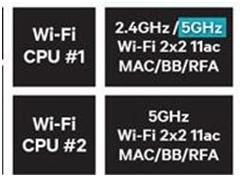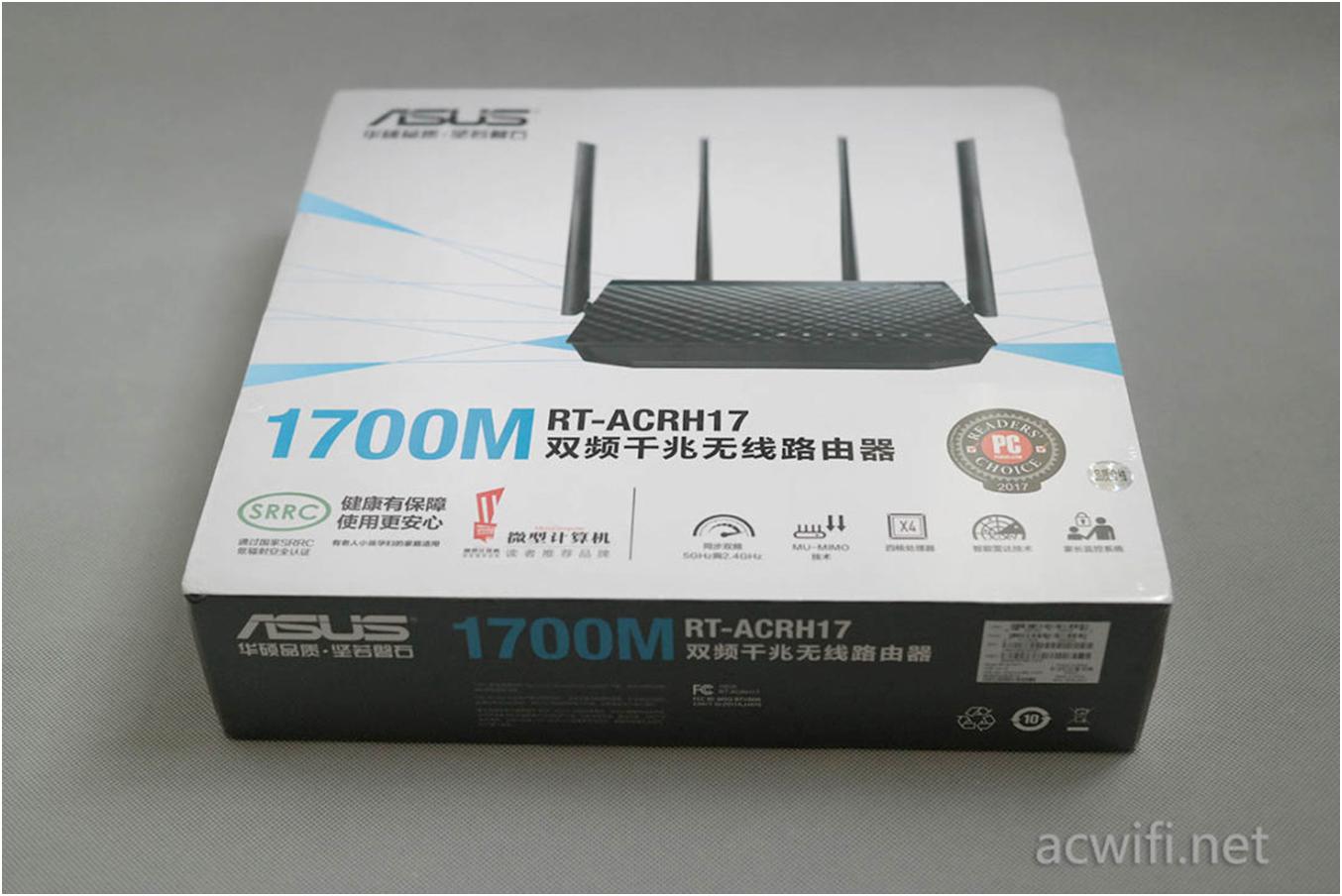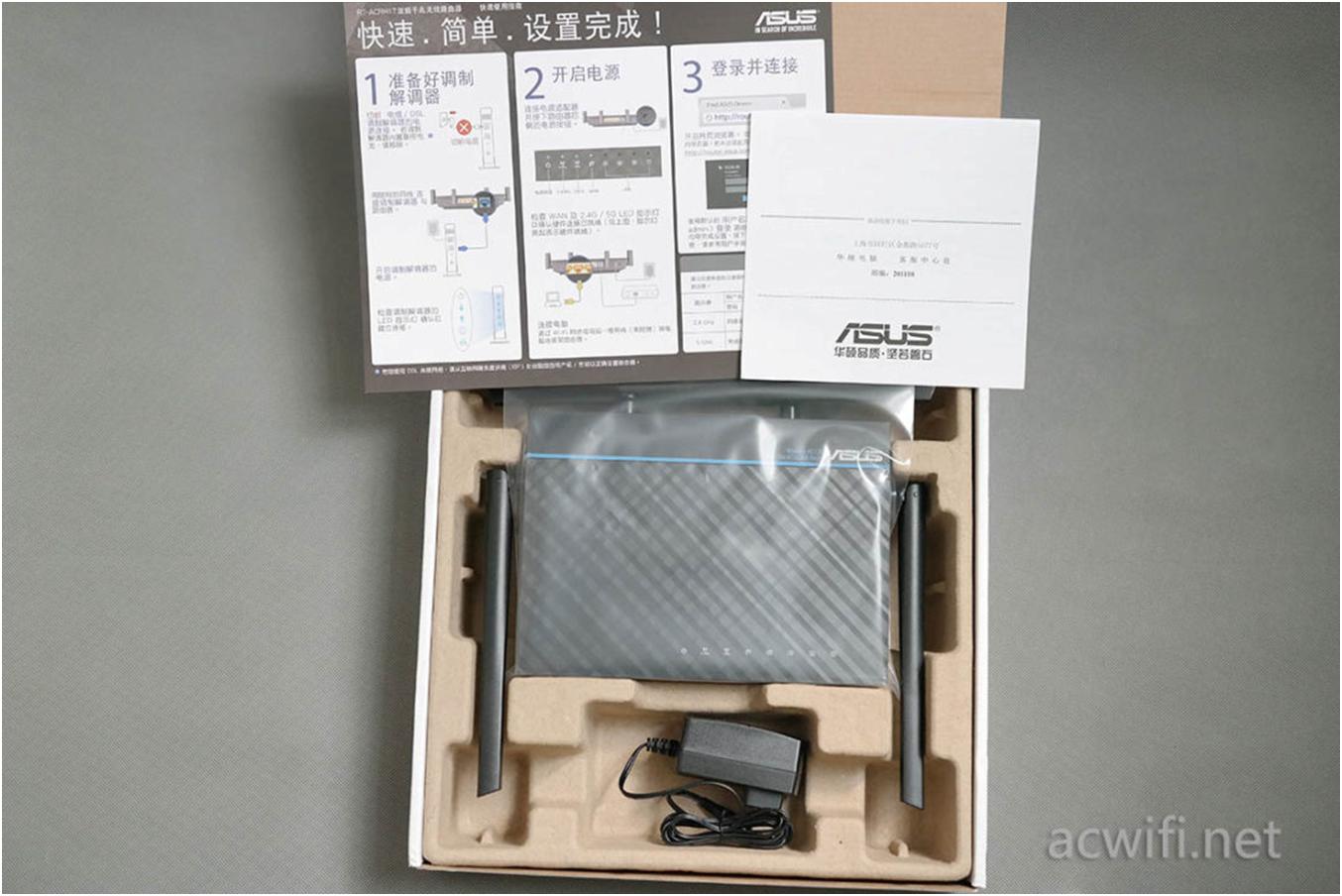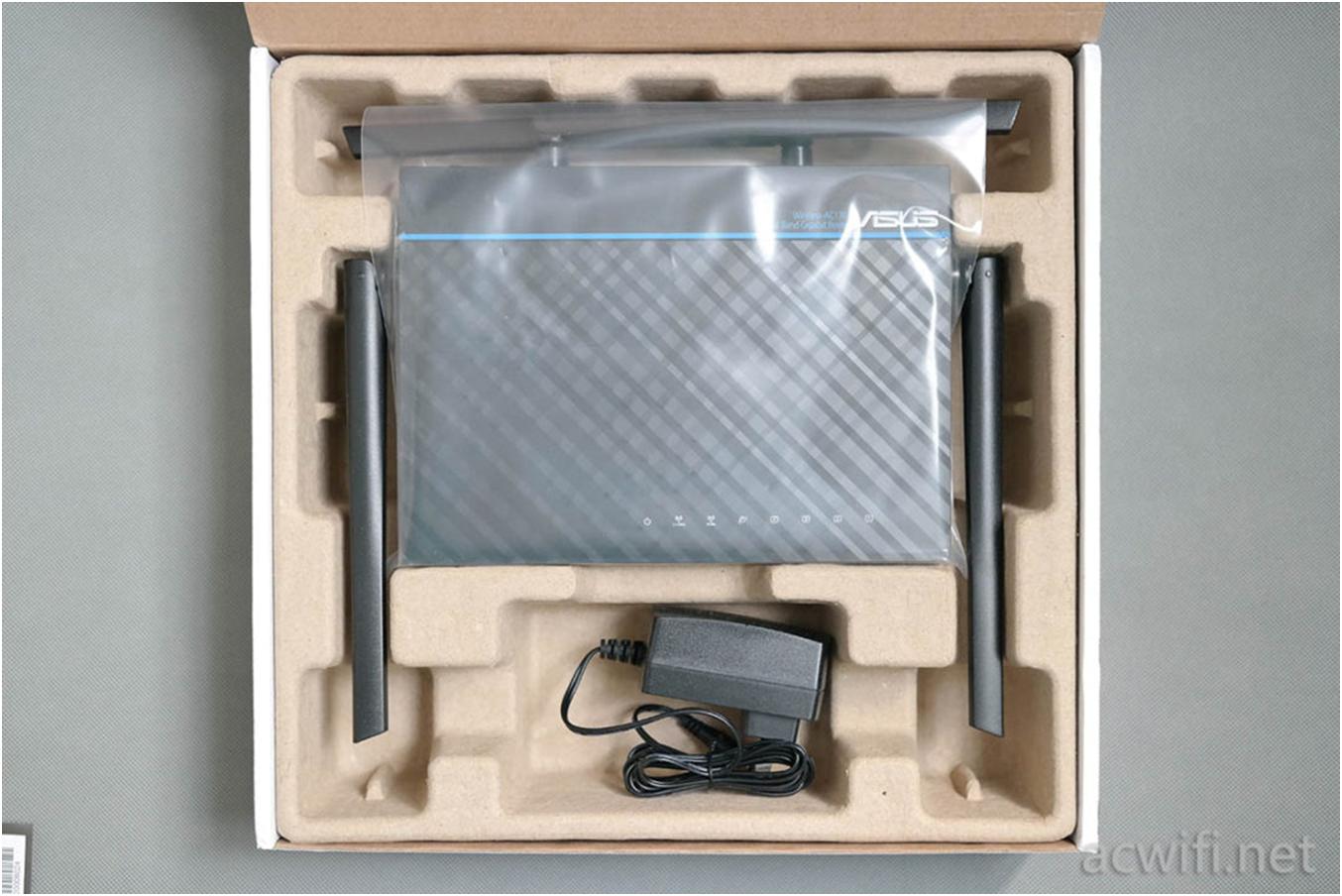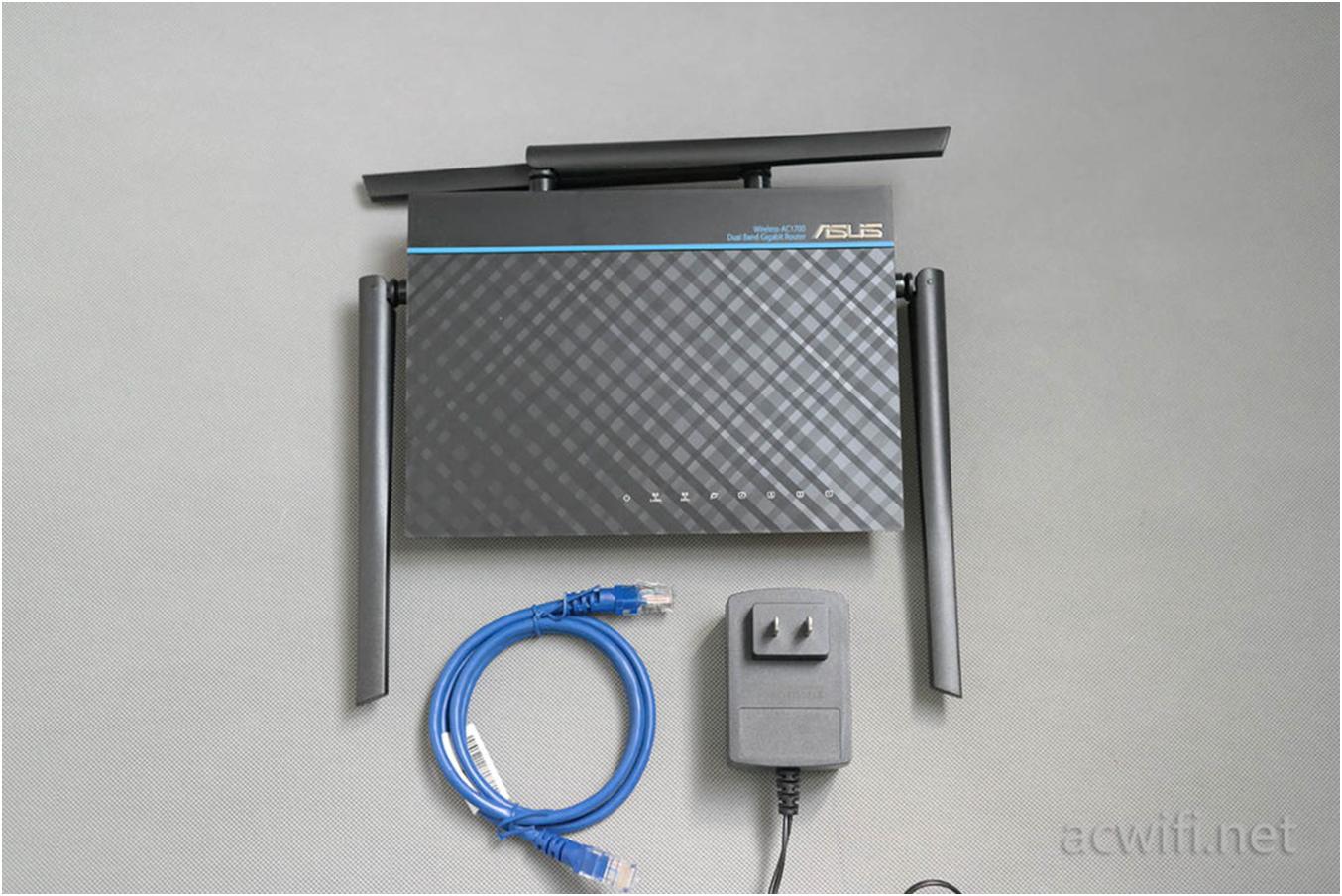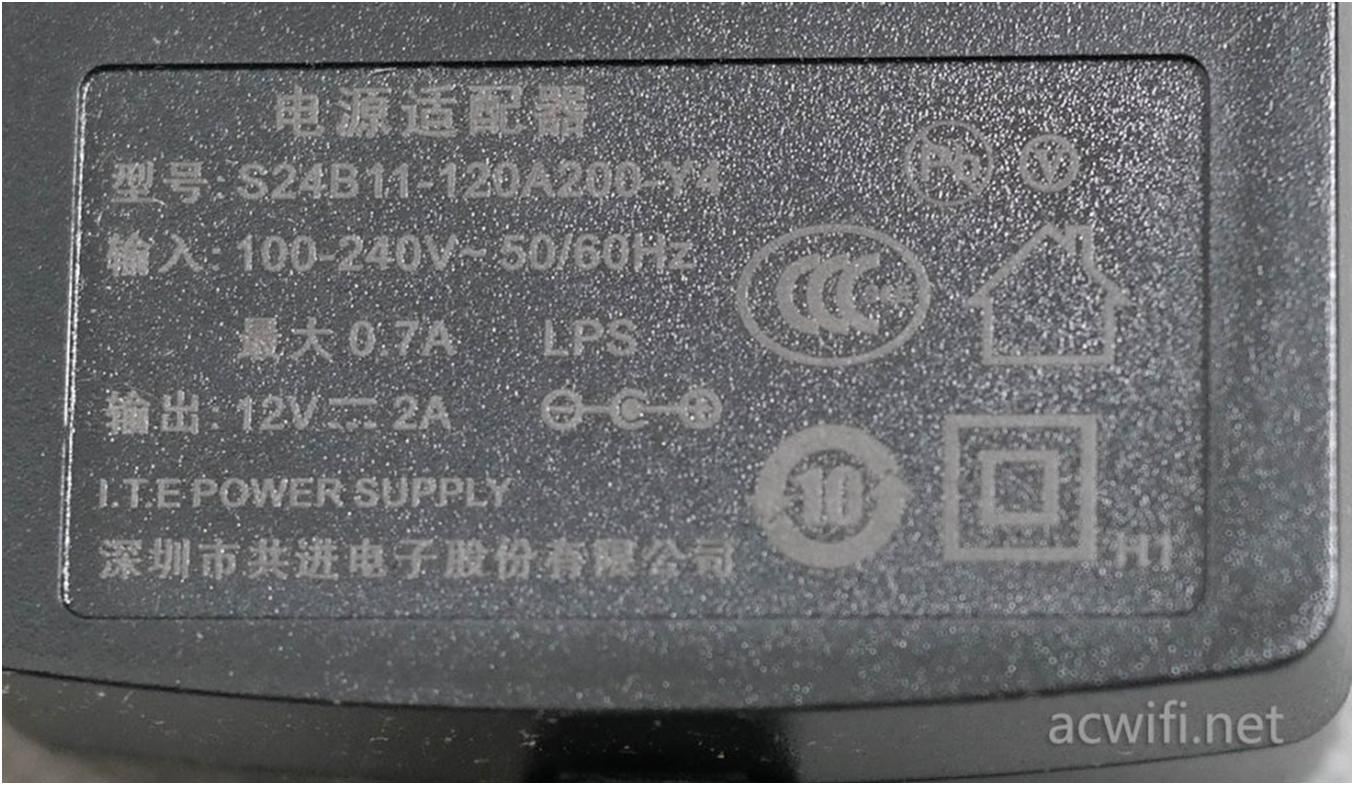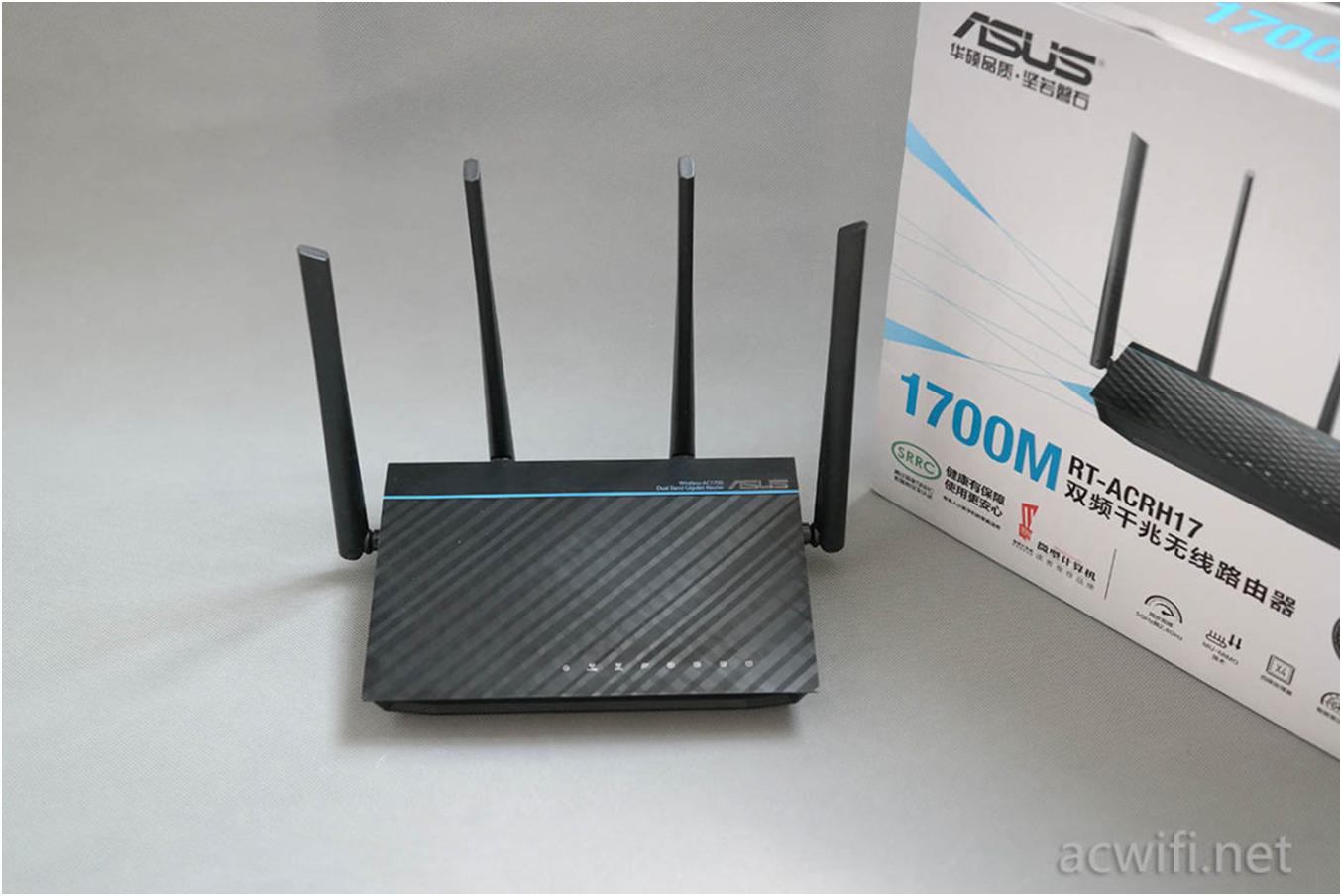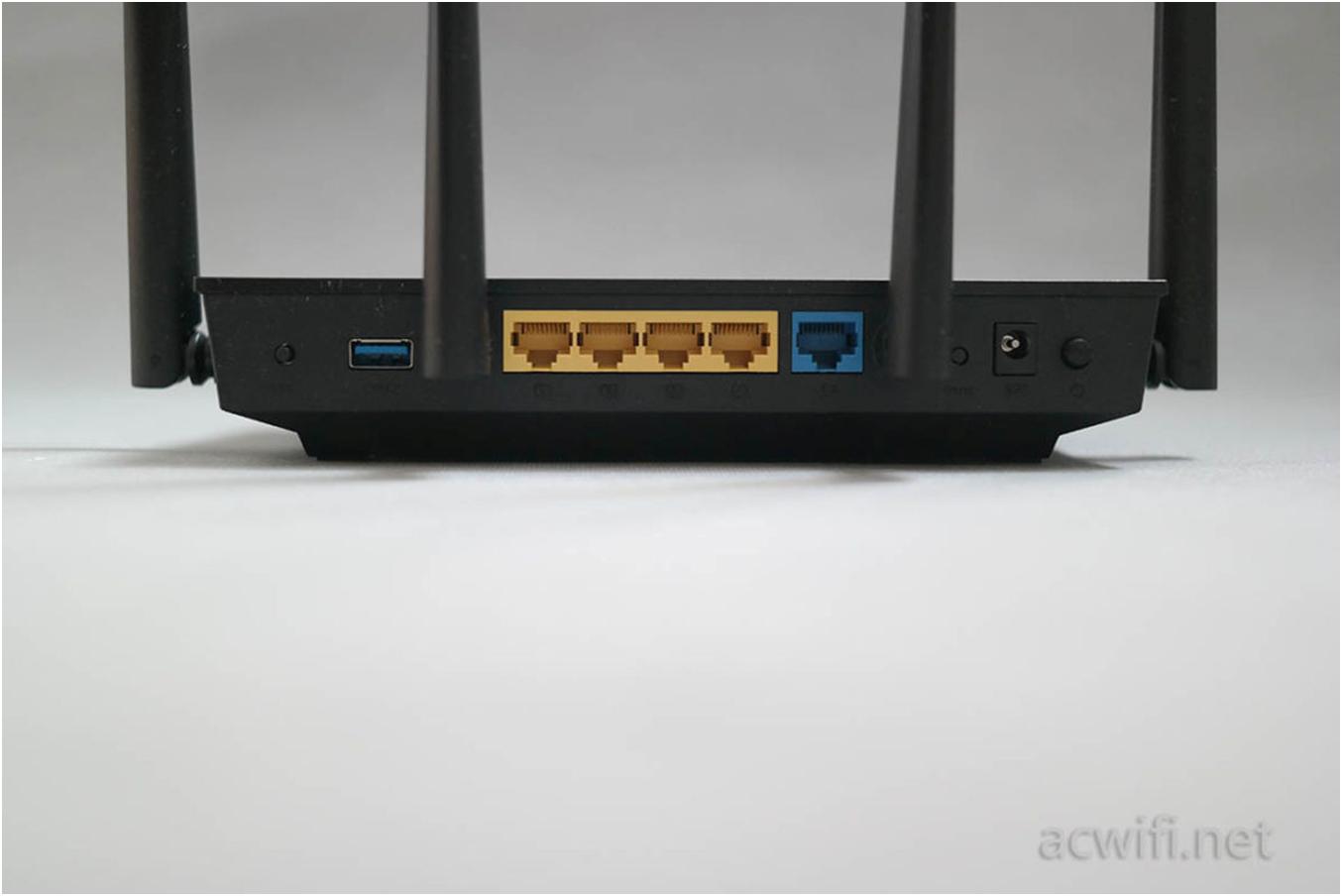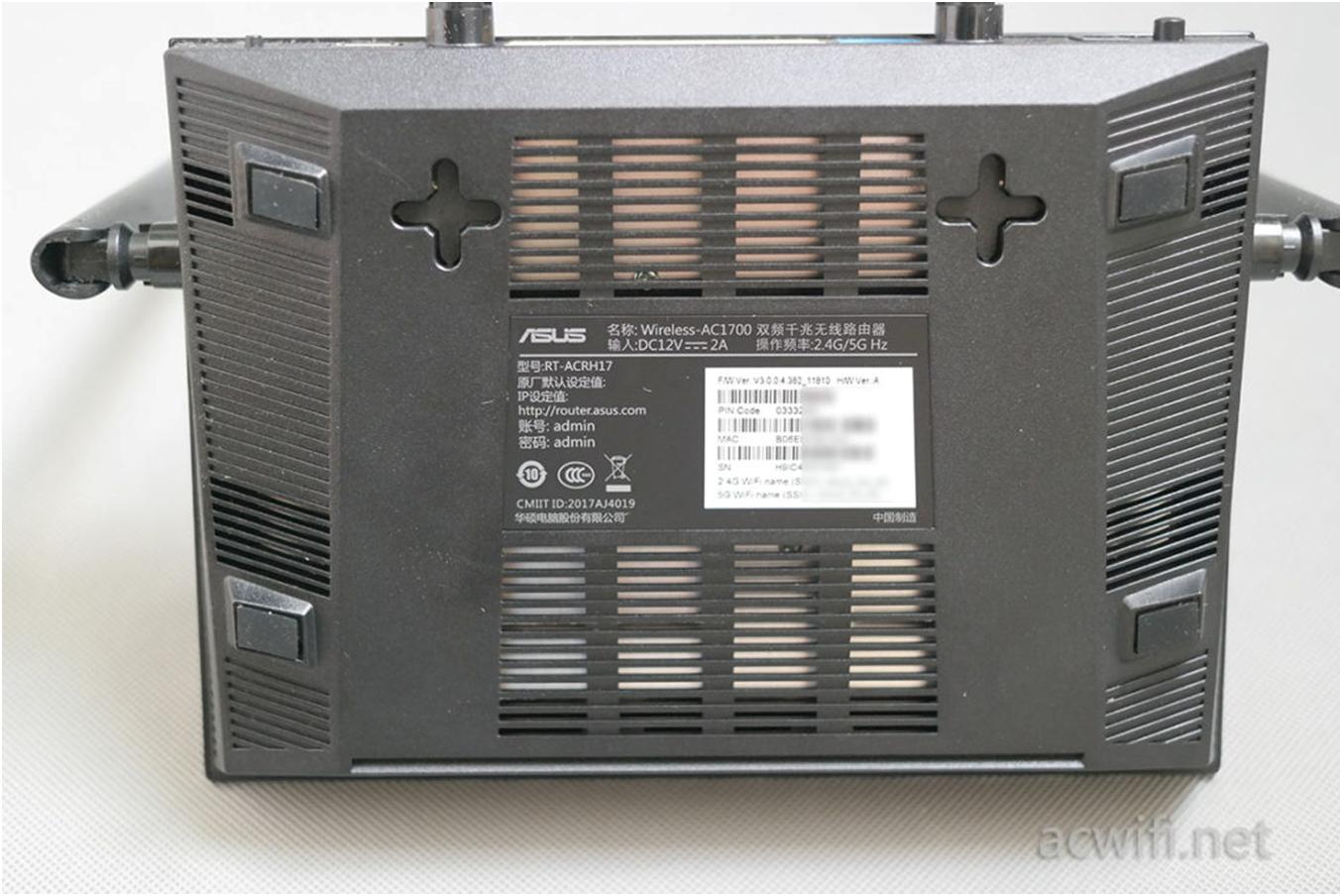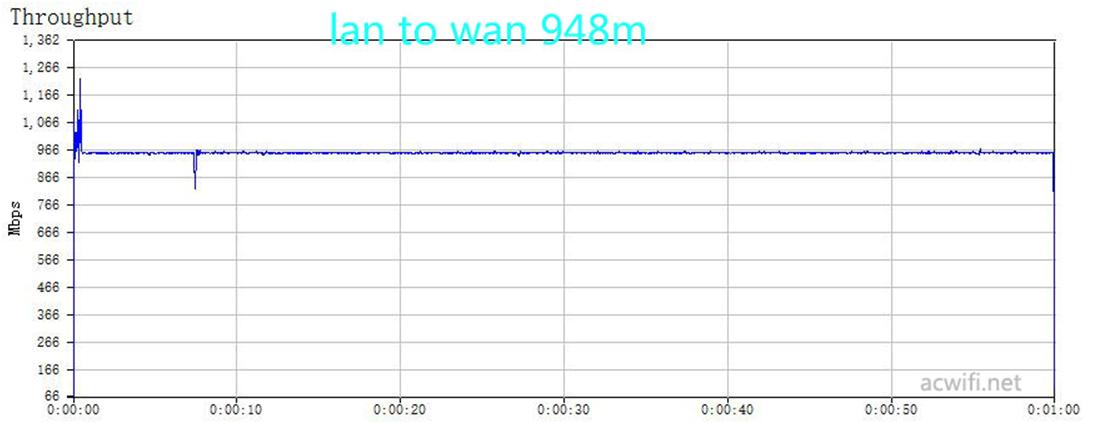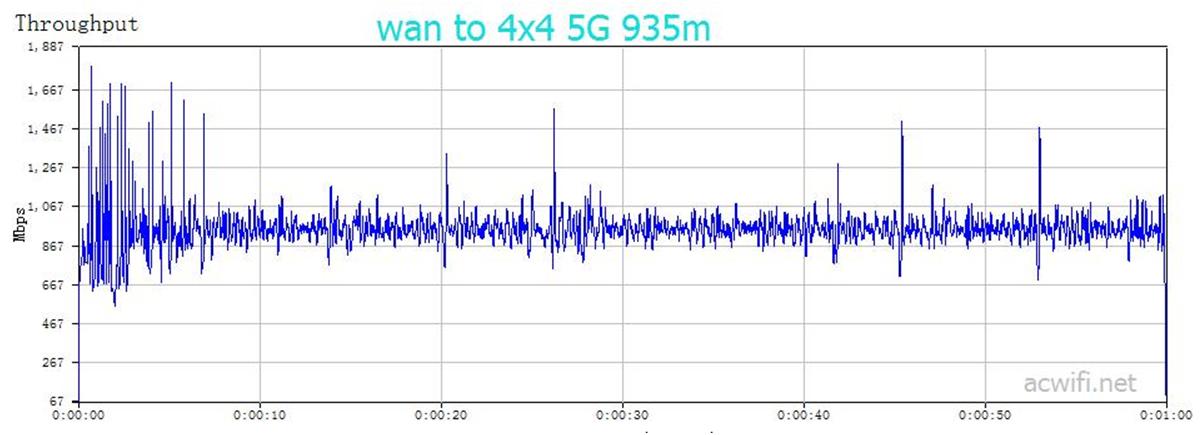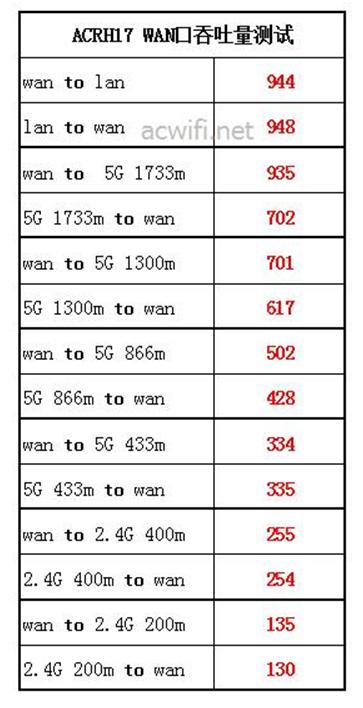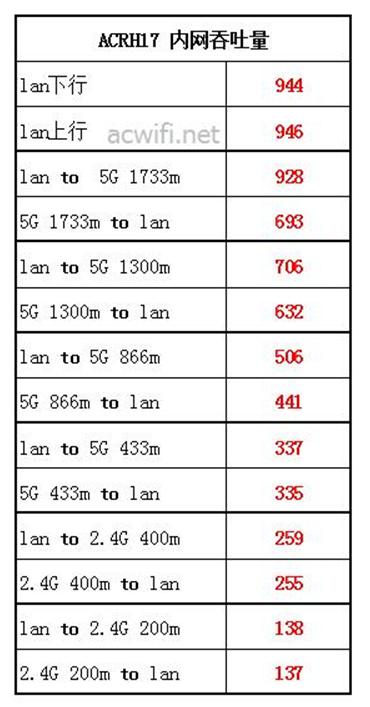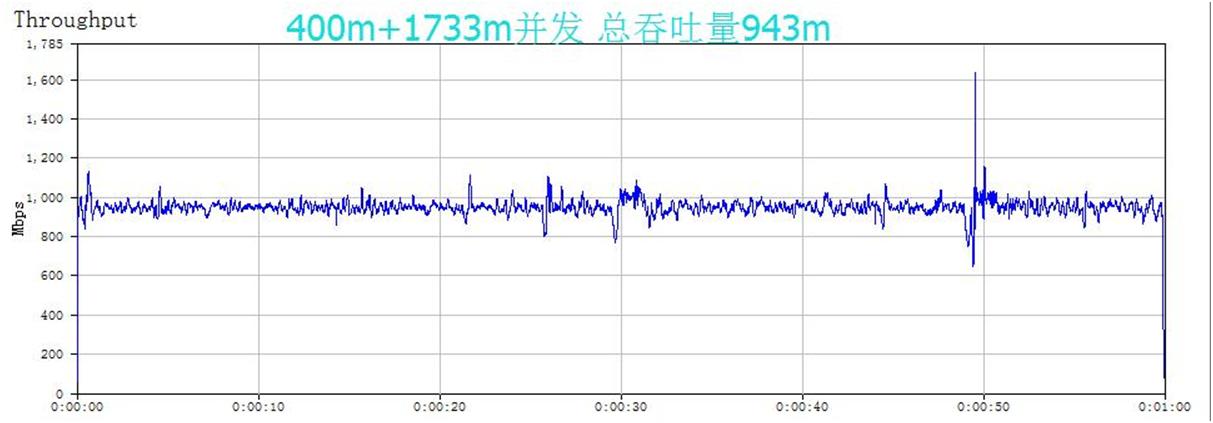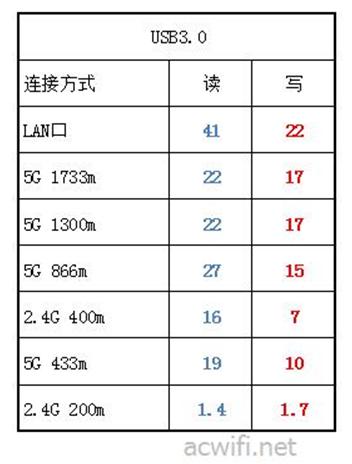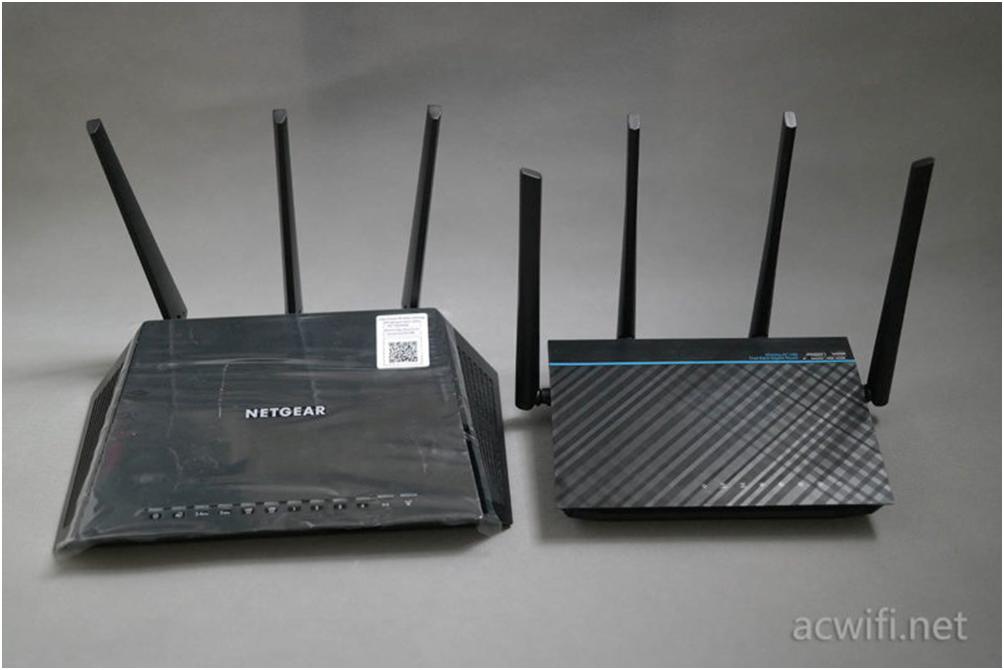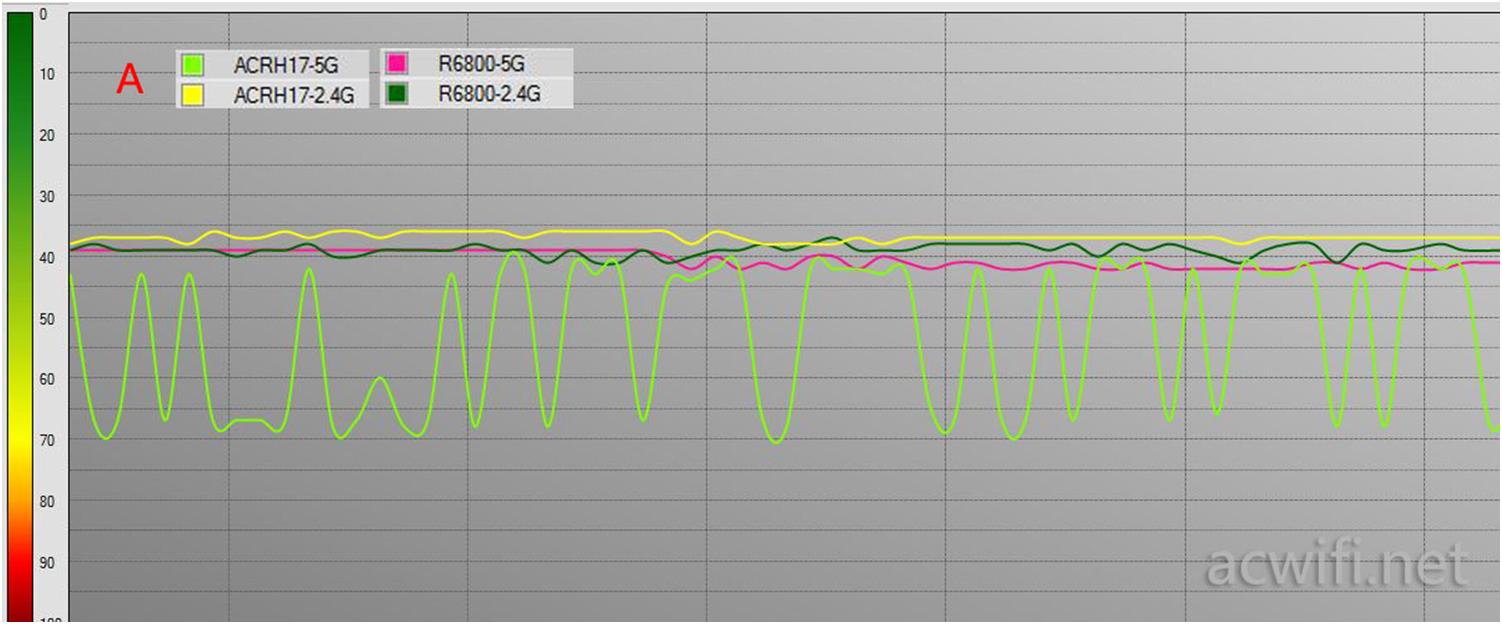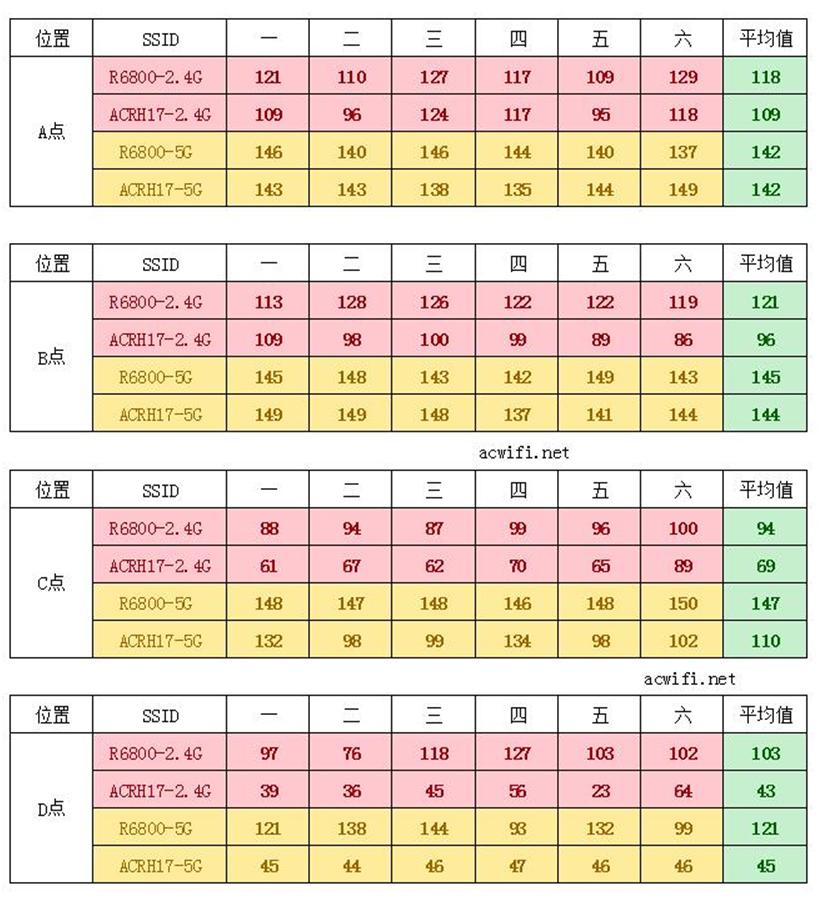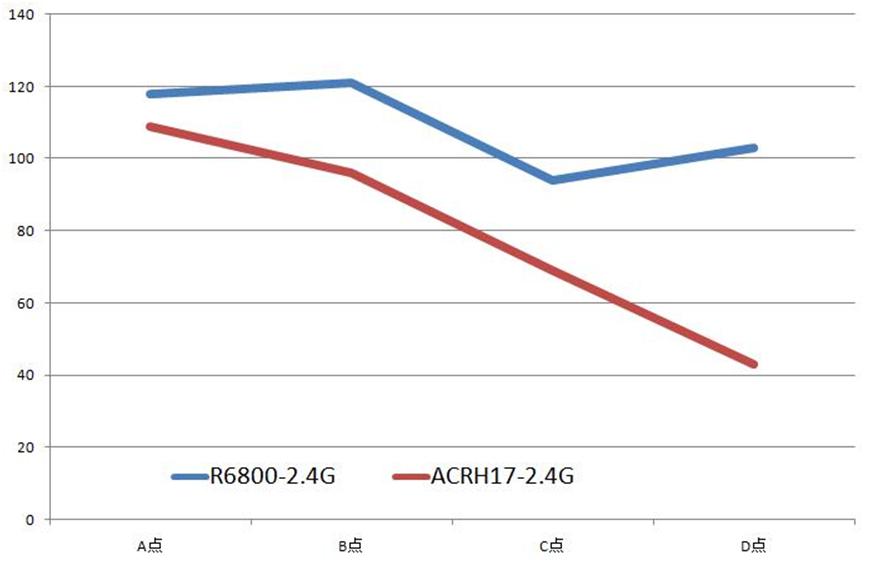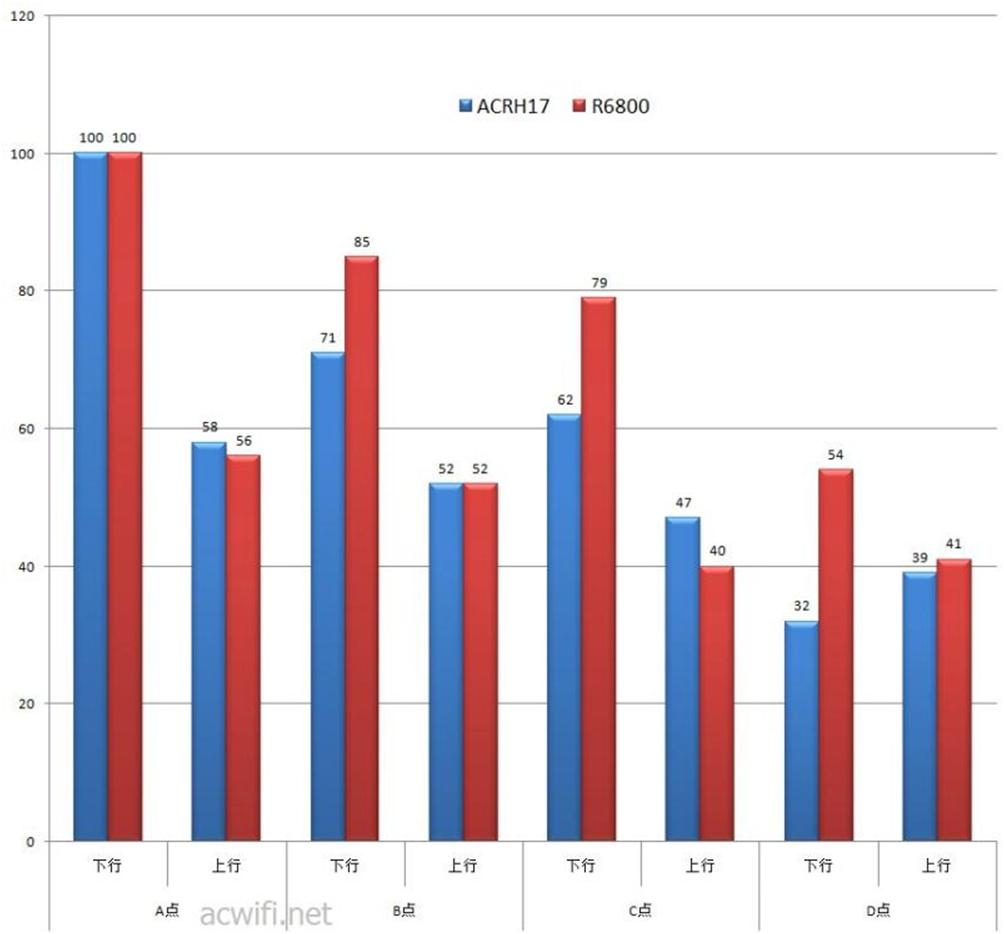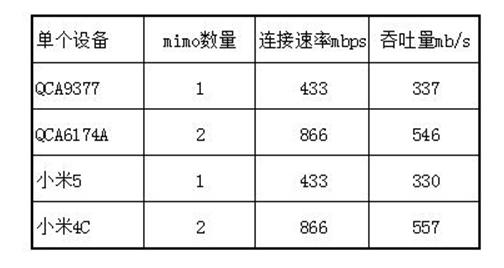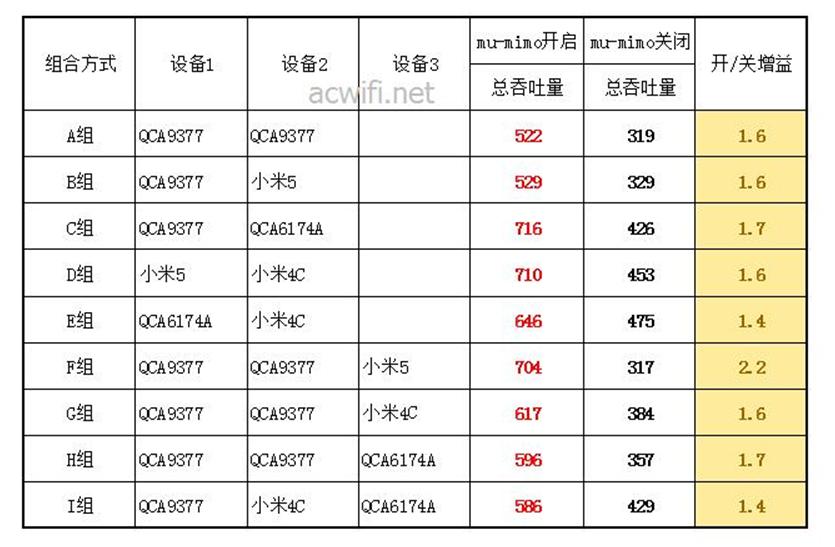ASUS RT-ACRH17 1700M, which is marked with 1700M, of which “17” should mean 1700M. The product’s outer box also indicates the total speed of 1700M. This ASUS ACRH17 is a bit like the NETGEAR R6800. It hides the real wireless speed and staggers its competition with other models. The 5G rate of ACRH17 is actually 1733m, which supports 4x4mimo. It is also mentioned in the product introduction. It can support three 1x1mu-mimo devices to communicate at the same time. See the red text below in the figure below:
 A device that can support three 1x1mimo devices must be a 4x4mimo wireless router. Therefore, the total wireless rate of the ACRH17 should be 2133m, which is higher than the ASUS AC66U B1, AC68U, and AC1900P of the same price. But the ACRH17’s 2.4G is only 2x2mimo, the speed is only 400M, but the mobile phone and notebook wireless network card, mostly 2x2mimo.
A device that can support three 1x1mimo devices must be a 4x4mimo wireless router. Therefore, the total wireless rate of the ACRH17 should be 2133m, which is higher than the ASUS AC66U B1, AC68U, and AC1900P of the same price. But the ACRH17’s 2.4G is only 2x2mimo, the speed is only 400M, but the mobile phone and notebook wireless network card, mostly 2x2mimo.
At present, the home router can support 4 streams of mu-mimo wireless routers, generally MT75 MTN of MTK, BCM4366 series of Broadcom, QCA9984 of Qualcomm. Which 5G wireless chip will it be? Later, through the actual measurement of mu-mimo, I know this answer clearly.
The product description mentions that the CPU used is a quad-core ARM Cortex A7 processor, which is likely to be Qualcomm’s IPQ4019, quad-core 717MHz. This CPU is also used in the NETGEAR orbi. This CPU is used in tri-band products (NETGEAR Orbi mystery dismantling ) Why is it used in tri-band products? Because IPQ4019 integrates 2 wireless chips, one wireless chip can use 2.4G or can use 5G, and the second wireless chip is 5G, then IPQ4019 may have multiple wireless combinations, 2.4G+5G, 5G+5G, or 2.4G alone. Since the 5G of the ACRH17 is 4x4mimo, the IPQ4019 is only responsible for 2.4G.
The CPU frequency is only 0.71G. Although it is a quad core, the low frequency makes the USB interface read and write speed not very high, that is, the USB3.0 interface is used.
The configuration of ACRH17 is clear without disassembly: IPQ4019+QCA9984+256MB memory
ASUS ACRH17 out of the box map:
The appearance is very similar to RT-AC1200. The biggest difference is that there is a blue bar, so some friends mistakenly think it is a hundred megabits WAN port. See the test below to see if it is a gigabit port. The side of the ACRH17 package box indicates that this is the full Gigabit rate of the WAN port and the LAN port. The antenna is not removable, and it looks a bit stingy compared to the price of 500 yuan. The power adapter is 12V/2A and the power is not very large.
First, ASUS ACRH17 WAN port performance test
This part mainly tests the throughput of the router’s WAN port. It is tested with different connection methods. It can be seen that the maximum bandwidth of various connection methods is about. For example, if you use a mobile phone 5G connection, the connection rate is 866m, then it How much broadband can I use? 200M, 300M, 500M?
The test software is ixchariot, one computer is connected to the WAN port of the router by a network cable, and the other computer is connected to the LAN port of the router by a network cable, or connected by wireless 2.4G/5G. Not only have 2 computers, because there are a variety of wireless cards, I want to test 4x4mimo, 3x3mimo, 2x2mimo and single stream 1x1mimo connection, so the wireless card I need to use:
ASUS PCE-AC88, wireless connection rate 1.7Gbps, 2.4G connection rate 400mbps;
华硕PCE-AC68,无线连接速率1.3Gbps;
intel8265ac,无线连接速率866.5mbps;
QCA9377,5G无线速度433mbps,2.4G连接速率150mbps;
测试用的脚本是Ultra_High_Performance_Throughput,只测试十线程,时间为一分钟,为了让每个结果都接近最大值,每个连接方式的测试都会连续进行2次测试,只要结果接近,就取其最大值,如果相差较大,会再测试两次。(测试都挺枯燥且费时间,因此如需转载,请注明出处,谢谢!)
先来WAN to LAN的速度,即WAN口下行带宽:944m,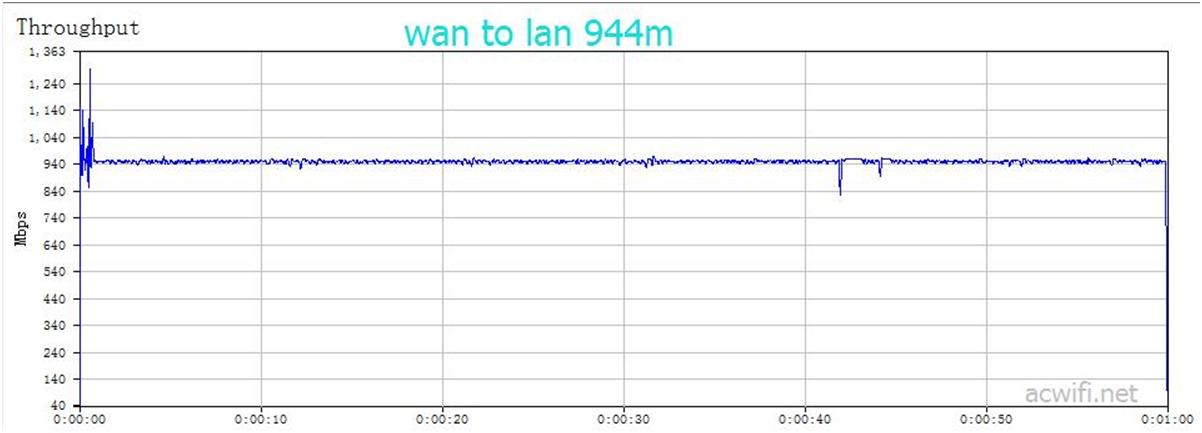
LAN to WAN,即WAN口上行带宽:948m。
从结果中看出ACRH17的WAN口和LAN口都是千兆速率无疑。
下图是PCE-AC88无线网卡连接ACRH17的5G WIFI测试结果,因为连接速率
是1733m,这个结果很厉害了,接近网线的速度
。达到了935m。这可是无线连接WAN口的吞吐量。
接下来的其它无线连接方式测试,我把结果直接做成表格,如下:
如果你的手机WIFI支持866m的5G,则下行网速可以达到502m,如果手机是常见的433m速率,最高可以满足300m的宽带使用。如果是电脑网线连接,1G的宽带是没有问题的。
二、ACRH17的内网吞吐量测试
测试的无线网卡与测试方式,跟前面的一样,只是接网口的电脑不接路由的WAN口,而是接路由器的LAN口,这就是局域网传输速度测试,结果如下表:
感觉acrh17,在3x3mimo的5G连接下,传输速度有点慢,才700m左右,这个结果,无论是用华硕PCE-AC68或黑苹果BCM94360来测试,结果都差不多,2x2mimo也不算好,只有500m左右。2.4G的速度都不错。
接下来测试双频并发的吞吐量,即一台电脑连接LAN口,一台电脑2.4G连接,连接速率400m,,一台电脑5G连接,连接速率1733m。结果如下:
943m,已经达到了LAN口的最大速度。
在测试无线传输时,测试了ACRH17的待机功率与工作时的最大功率:
Standby power is 6.1W, 10.4W for 5G transmission, and 12.8W for dual-band concurrent operation. The router runs for a few days, and the outside temperature is only slightly warm.
Third, ACRH17 USB read and write speed test
It has a USB3.0 interface, the system has enabled the “reduce USB 3.0 interference” function by default (the router will automatically restart after modifying this option), so the default is the speed of USB2.0, I test the speed of this on and off separately. That is, the read and write speed of USB2.0 and USB3.0.
The connection method is the same as before.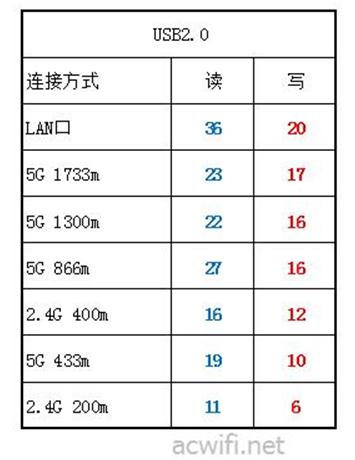
The computer uses a network cable to connect to the LAN port, and reads USB2.0 speed at 36MB/sec and write speed at 20MB/sec. I don’t know why, using the intel8265ac wireless network card to read the USB port is faster than using the ASUS PCE-AC88.
USB3.0 has no obvious improvement compared to USB2.0. It can be said that USB read and write speed is very general. After using USB3.0, the QCA9377’s network card was disturbed, and the speed was like a turtle.
Sure enough, the low frequency CPU limits the read and write speed of the USB. IPQ4019 and 1.7G frequency IPQ8065, USB speed is much different.
It is not recommended to turn off the “Reducing USB 3.0 Interference” feature. Anyway, the speed will not increase significantly. However, it is enough to back up photos and play local Blu-ray movies.
Fourth, wireless signal strength test
Compared with the ACRH17 wireless signal strength test, the NETGEAR R6800 has the same features: the buried 5G wireless rate, and both support MU-MIMO, and the price is similar. The closest one should be the ASUS AC66U B1. There are also many friends who want to use these two models for comparison tests. The AC66U B1 will stay in the next test.
Wannian floor plan, two routers placed in the WIFI position in the figure, two routes are about 40cm apart. The wireless network card with PCE-AC88 is placed in four positions A, B, C, and D for wireless signal strength test.
The wireless settings of the NETGEAR R6800 and ACRH17 are set to the US region.
 The signal test results are as follows:
The signal test results are as follows:
At point A, the 5G of ACRH17 fluctuates very much, and the signal strength of 2.4G is slightly stronger than ASUS.
At point B, the signal strength is not much different. 2.4G is a little stronger than ACRH17, not obvious. 5G is a little stronger than R6800. Not obvious.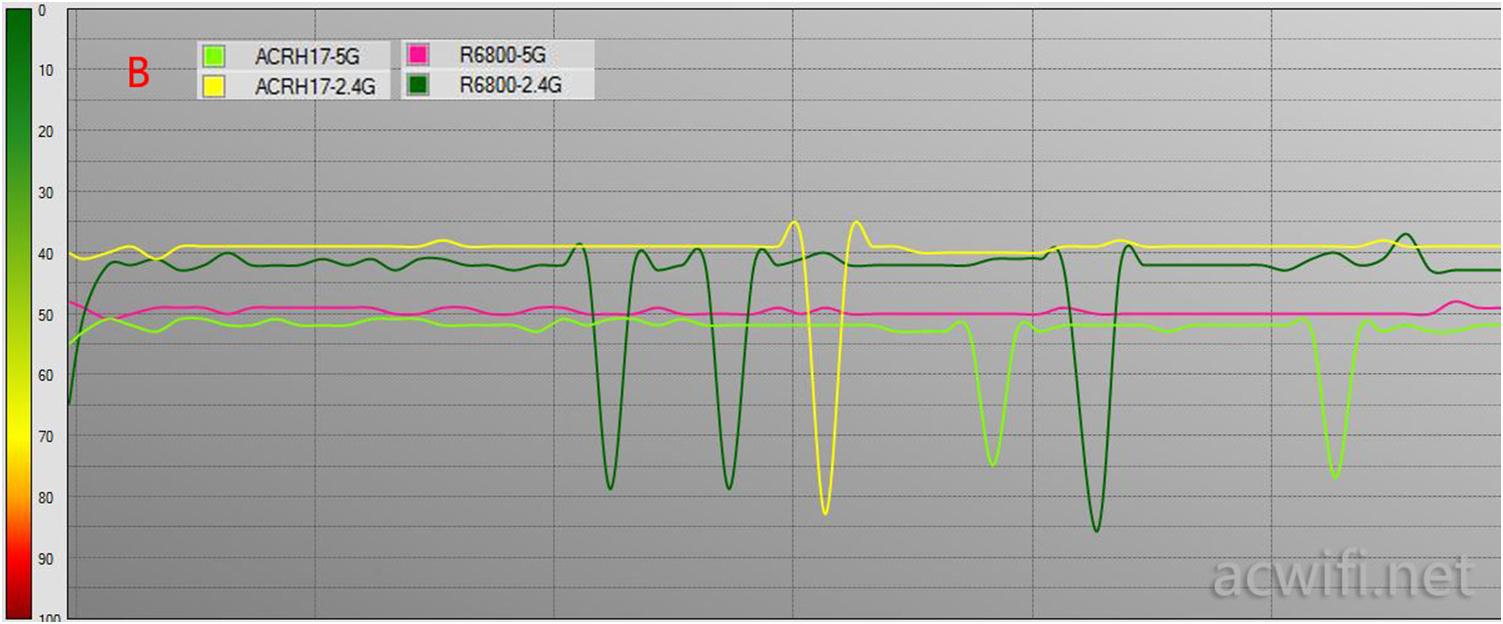
At point C, the signal strength is the same as point B, but the gap is obviously a little bit.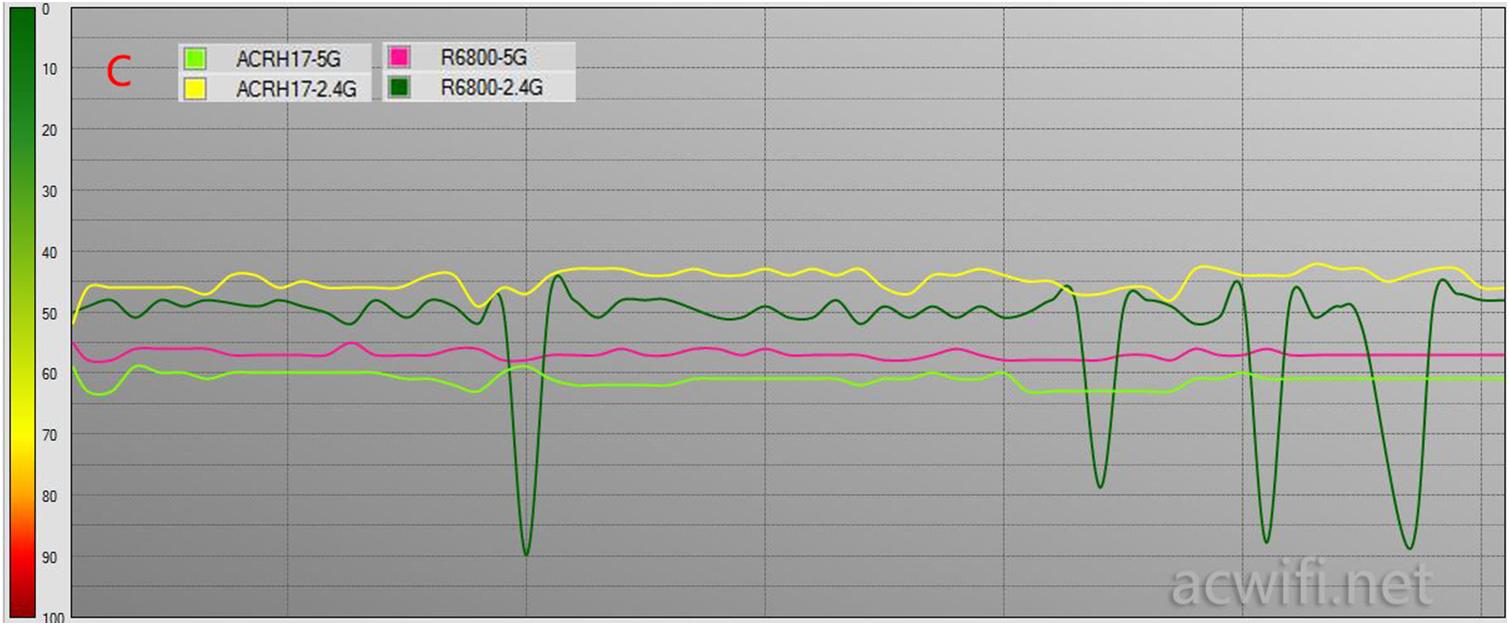
Downstairs at point D, the situation is similar to point C, and the 5G signal gap is widened. The R6800 is significantly stronger.
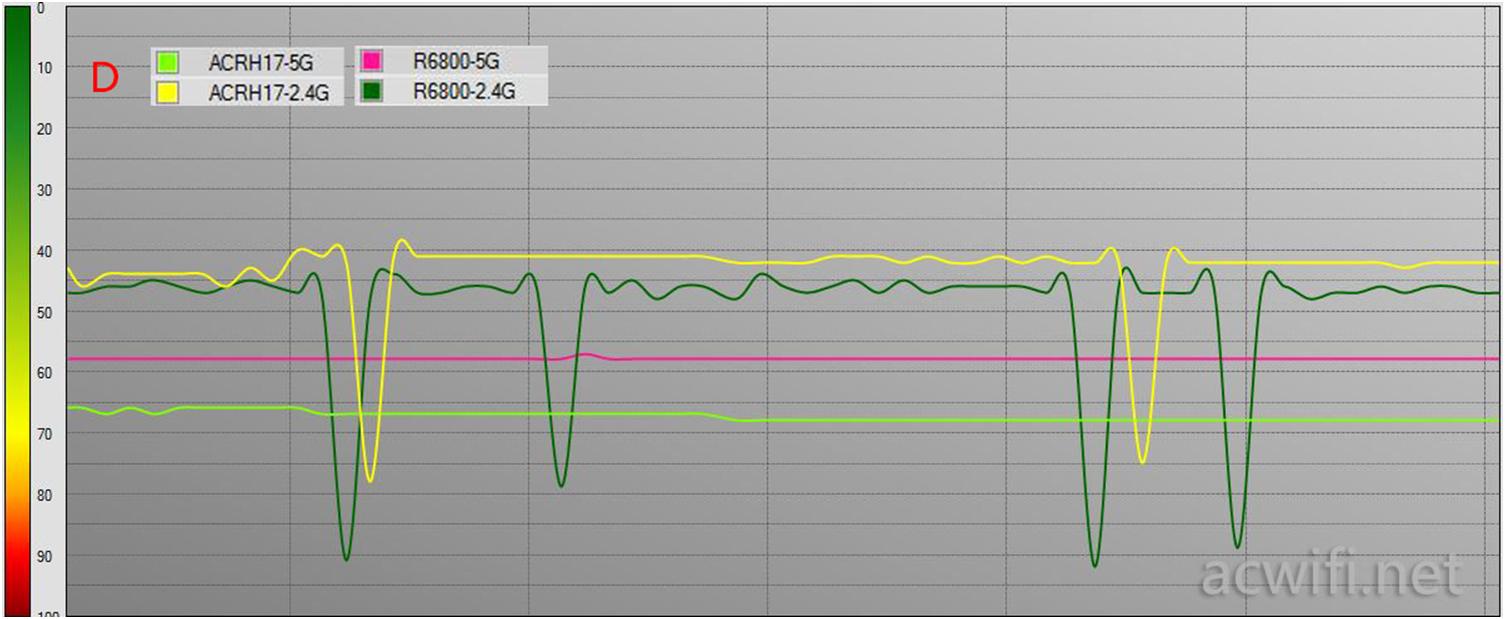
In general, the 2.4G signal is stronger than the ASUS ACRH17, and the 5G signal is stronger than the NETGEAR R6800.
Next, in the original 4 locations, the mobile phone millet 4C (wifi chip is QCA6174A) to test the network speed, broadband is telecommunications 100M, the test software is speedtest. The wireless rate of the mobile phone connection is the same, 2.4G is 173m speed, 5G is 866m speed. Each WIFI signal is continuously measured for 6 times. Finally, take the average value for comparison.
The speed measurement results are as follows:
Take the average value and make the following comparison chart.
2.4G:
The speed of the meter measured by Xiaomi 4C, the net piece R6800 is all-out.
In the 5G aspect, the close A and B results are the same, but the C point gap becomes larger, until the D point downstairs, the gap is very large.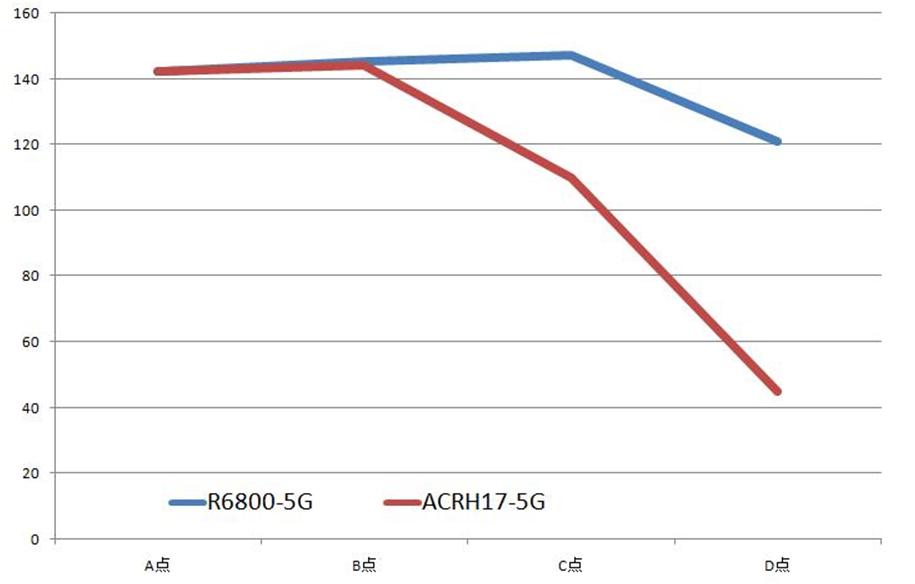
For the reason, Qualcomm’s WIFI chip corresponds to Qualcomm’s router wireless chip, and it should have better performance. The current situation is that Xiaomi 4C and MTK wireless chips have better performance. This result surprised me a bit.
V. Wireless file transfer speed test at different distances
The wireless network card used for testing is PCE-AC88, which tests the speed of lan to wlan in 4 locations. One computer is connected to the LAN port of the router. Through the software fastcopy, a single file is copied between the two computers to obtain wireless. transfer speed.
A point speed:
The 2.4G connection rate is 400m, the downlink speed is 30.2MB/sec, and the uplink speed is 24.3MB/sec.
The 5G connection rate is 1.7G, the downlink speed is 100.3MB/sec, and the uplink speed is 58MB/sec.
5G can be over 100 in the case of a wall, depending on 4 streams. (But there is no Fibonacci K3 that supports 1024-QAM)
Point B speed:
The 2.4G connection rate is 400m, the downlink speed is 28.8MB/sec, and the uplink speed is 24.1MB/sec. There is almost no error in 2.4G.
The 5G connection rate is 1.1G, the downlink speed is 71.1MB/sec, and the uplink speed is 52.8MB/sec. The 5G downlink speed attenuation is obvious and normal.
C point speed:
The 2.4G connection rate is still 400m full, the downlink speed is 17.4MB/sec, and the uplink speed is 11.4MB/sec.
The 5G connection rate is 975m, the downlink speed is 62.7MB/sec, and the uplink speed is 47.8MB/sec.
D point speed:
The 2.4G connection rate is 400m, the downlink speed is 24.3MB/sec, and the uplink speed is 16.5MB/sec.
The 5G connection rate is 585m, the downlink speed is 32.4MB/sec, and the uplink speed is 39.1MB/sec.
Usually, the speed of the 2.4G speed of the wireless network card at the D point will be faster than the C point. The relationship between the straight line distance D and the C point is right.
The 5G of the NETGEAR R6800 is also 4 streams, so I compare the 5G speed of the ACRH17 with the 5G speed of the R6800. The tested wireless network cards are all PC-AC88, and the wireless channel setting is also 161. (Why not compare 2.4G? Because the number of mimo is different, ACRH17 is 2x2mimo, R6800 is 3x3mimo)
The results are compared, as shown in the following chart:
The results can be summarized: 5G signal and speed, ACRH17 is not as good as R6800, or: Qualcomm QCA9984 is not as fast as MT7615N.
6. Mu-mimo test of ASUS ACRH17
You can also check out this about the specific test of mu-mimo: Qualcomm’s mu-mimo measured results
I have to test a lot of equipment, simply list it:
A computer, the network cable is connected to the LAN port of the ACRH17, this is the test server. Other phones and computers are servers.
There are 3 computers, respectively installed QCA9377, QCA6174A, these two are wireless network cards with PCIE interface (QCA9377 for 2 computers, QCA6174A for 1)
There are 2 mobile phones, 1 is Xiaomi 4C, QCA6174A WIFI chip, and Xiaomi 5 mobile phone, QCA6164A WIFI chip.
All of the above are Qualcomm’s wireless chip devices, all supporting mu-mimo technology.
Previously tested 4 1x1mimo devices for wdr8500, can not run in mu-mimo mode at the same time, so this time will not test 4 devices.
In the default settings, the mu-mimo switch is enabled.
First test the throughput of the above single device:
The throughput of 1x1mimo devices is around 330m, and the throughput of 2x2mimo devices is around 550m.
Then test the mu-mimo open and deactivated data in different device combinations. The results are as follows:
The most improved by mu-mimo is that three single-stream devices transmit data at the same time, that is, F group, which is 2.2 times. The ordinary su-mimo is just a transmission method of rotating queues. It is necessary to wait for one device to transmit and then to the second. The devices transmit data, so the total throughput of su-mimo is not higher than the single maximum throughput of the receiving device. Do not understand?
For example, in group F, when mu-mimo is shut down, one computer sends data to three computers at the same time, the total throughput is only 317m, which is lower than the single throughput of 330m; there is group C, only 426m after closing mu-mimo , lower than the 546m of a single QCA6174A.
When testing mu-mimo data transmission, I have been connecting to the 5G of ACRH17 with another mobile phone that does not support mu-mimo. If this mobile phone does not transmit data wirelessly, other devices supporting mu-mimo can also be performed normally if the mobile phone When watching a movie video, the data transmitted in mu-mimo will drop. That is to interfere with the operation of mu-mimo.
For more detailed measurements on MU-MIMO, you can read this latest MU-MIMO test: the most comprehensive MU-MIMO measurement in history, a variety of device hybrid testing . Test results prove that each brand can be compatible with MU-MIMO, but the high path is better supported by the chip for 2x2mimo receiving devices.
to sum up:
The ASUS ACRH17 should be considered the most cost-effective wireless router supporting Qualcomm mu-mimo. Although the TPLINK-WDR8500 is cheaper, but the memory is less than half, there is no USB interface, the CPU is not IPQ4019, Asus is only tens of dollars more expensive than it, and ASUS has a three-year warranty, as well as a router setting interface on the tall. I think the emergence of ACRH17 is to compete with WDR8500 and WDR8510.
